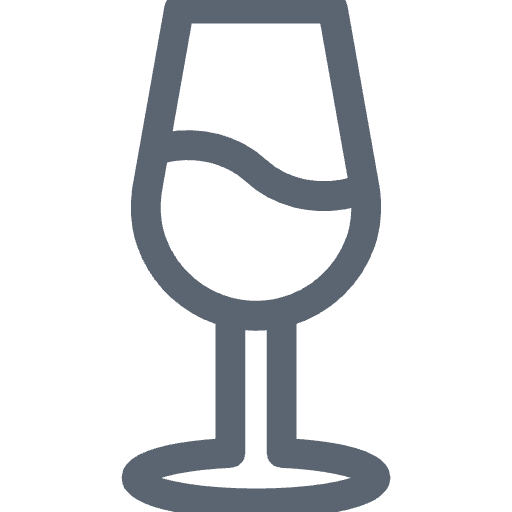Chianti Geography
Between Florence and Siena stretches a chain of hills where the fusion of landscape, architecture, and agriculture is ancient and profound. The villas, cypresses, olive trees, vines, cliffs, and forests create a beautiful scenery. Once a wild jumble of crops necessary for the livelihood of Tuscan farmers, today the vineyards stretch neatly uphill and down valleys along the most favorable sites. The Chianti region is divided into seven zones that wrap like a belt around the Chianti Classico area. The zones extend from Rufina northeast of Florence to Montalcino and Arezzo. The name Chianti dates back to the ancient Etruscans, and the subdivision of the zones dates back to 1716, although the quality of the wines produced at that time was extremely inconsistent.
Chianti History
As early as 1872, Baron Ricasoli (sometime Prime Minister of Italy) distinguished between two forms of Chianti at his Brolio Castle: a simple one for young enjoyment and an ambitious version aimed at aging. For Chianti intended to be drunk early, he allowed the blending of the then-popular white grape Malvasia with the red grapes Sangiovese and Canaiolo. When the DOC laws defined Chianti in 1963, they insisted on 10% and allowed up to 30% white grapes of any style and origin. Pale Chianti became the norm, and it became clear that either the rules would have to be changed or the area's producers would have to make their best wine their own way and give the wine a new name. Thus, the foundation was laid for today's often excellent Chianti Classico.
Chianti wine
Of the seven Chianti subzones, Chianti Rufina, east of Florence, is the most distinctive, producing elegant wines that age remarkably well. Renowned wineries are also located around San Gimignano in the Chianti Colli Senesi subzone, the hills above Siena. The white Vernaccia di San Gimignano, now partly fermented on the skin in amphorae, comes from here, for example. The Chianti red wine and Chianti Riserva produced in the hills above Florence, Pisa, and Arezzo (in the Chianti Colli Fiorentini, Colline Pisane, and Colli Aretini subzones) tend to be less refined, as do the wines of the Chianti Montalbano subzone northwest of Florence.
Chianti Classico wine
Today, Chianti Classico is an extremely serious wine, made primarily (80-100%) from low-crop, high-quality Sangiovese vines, aged in oak barrels and with a life expectancy of ten years or more. The other varieties permitted in Chianti Classico, up to a total of 20%, are the traditional Canaiolo, the deeply colored Colorino, and international varieties, notably Cabernet Sauvignon and Merlot, but these international grapes are gradually being abandoned in favor of a 100% Tuscan wine. Chianti Classico vineyards are located at relatively high altitudes, at least 250-500 m above sea level, and the characteristic soil type is a very friable marl known locally as galestro, sometimes mixed with limestone called Albarese.
In Chianti Classico, there has been a return from smaller French barriques to the traditional large Slavonian oak barrels known as botte. The area has perfected the art of transforming the bright, highly acidic Sangiovese into wines that are complex, satisfyingly tannic, and savory. Richness, on the other hand, is not a Sangiovese trait. The Riserva Chianti Classico, which accounts for almost 25% of total production and is meant to be drunk after extensive bottle aging, is often more impressive than the much newer Gran Selezione, supposedly superior wines selected based on tastings.
FAQ ABOUT CHIANTI WINE
What kind of wine is Chianti Classico?
Chianti Classico is a special and premium category of Chianti wine originating from Tuscany, Italy. It originates from the historic heartland of Chianti and is subject to specific production rules, including the use of at least 80% Sangiovese grapes.
Is Chianti wine dry?
Yes, Chianti wine is generally dry in flavor profile.
Where is the Chianti region in Italy?
The Chianti region is located in Tuscany, a region in central Italy. It extends across several provinces, including Florence and Siena.
Which grape is Chianti Classico?
The main grape for Chianti Classico is Sangiovese. Other permitted grape varieties may be included in smaller quantities, such as Canaiolo, Colorino, and Merlot.
Is Chianti always red wine?
Yes, Chianti is typically a red wine. However, there are also white and rosé versions of Chianti made from other grape varieties.
Is Chianti wine a cuvée?
Yes, Chianti wine can be considered a cuvée because it is often made from a blend of different grape varieties.
What does Chianti wine taste like?
Chianti wine typically has aromas of cherries, red berries, spices or dried herbs, and a pronounced acidity. The flavor can vary depending on the vintage, producer, and exact composition.
Is Chianti a good red wine?
Yes, Chianti is often considered a fine red wine. High-quality Chianti Classico wines can exhibit impressive structure, elegance, and longevity.
What goes well with Chianti wine?
Chianti wine pairs well with a variety of Italian dishes, especially Tuscan cuisine, which often features game and vegetables.

 Tuscany
Tuscany  Cuvée, dry
Cuvée, dry juicy, spicy, complex
juicy, spicy, complex

 Tuscany
Tuscany  Sangiovese, dry
Sangiovese, dry fruity, spicy, juicy
fruity, spicy, juicy

 Tuscany
Tuscany  Sangiovese , dry
Sangiovese , dry fruity & fresh
fruity & fresh

 Tuscany
Tuscany  Sangiovese , dry
Sangiovese , dry ethereal & spicy
ethereal & spicy

 Tuscany
Tuscany  Sangiovese, dry
Sangiovese, dry fruity & fresh
fruity & fresh

 Tuscany
Tuscany  Cuvée, dry
Cuvée, dry floral and fresh
floral and fresh

 Tuscany
Tuscany  Sangiovese, dry
Sangiovese, dry fruity, spicy, juicy
fruity, spicy, juicy

 Tuscany
Tuscany  Cuvée, dry
Cuvée, dry red fruit, floral, spicy
red fruit, floral, spicy

 Tuscany
Tuscany  Sangiovese, dry
Sangiovese, dry complex & balanced
complex & balanced

 Tuscany
Tuscany  Sangiovese, dry
Sangiovese, dry powerful & elegant
powerful & elegant

 Tuscany
Tuscany  Cuvée, dry
Cuvée, dry red fruit, floral, spicy
red fruit, floral, spicy











